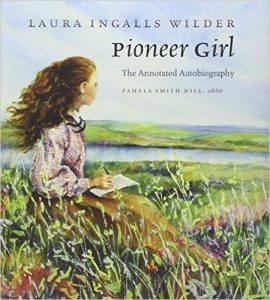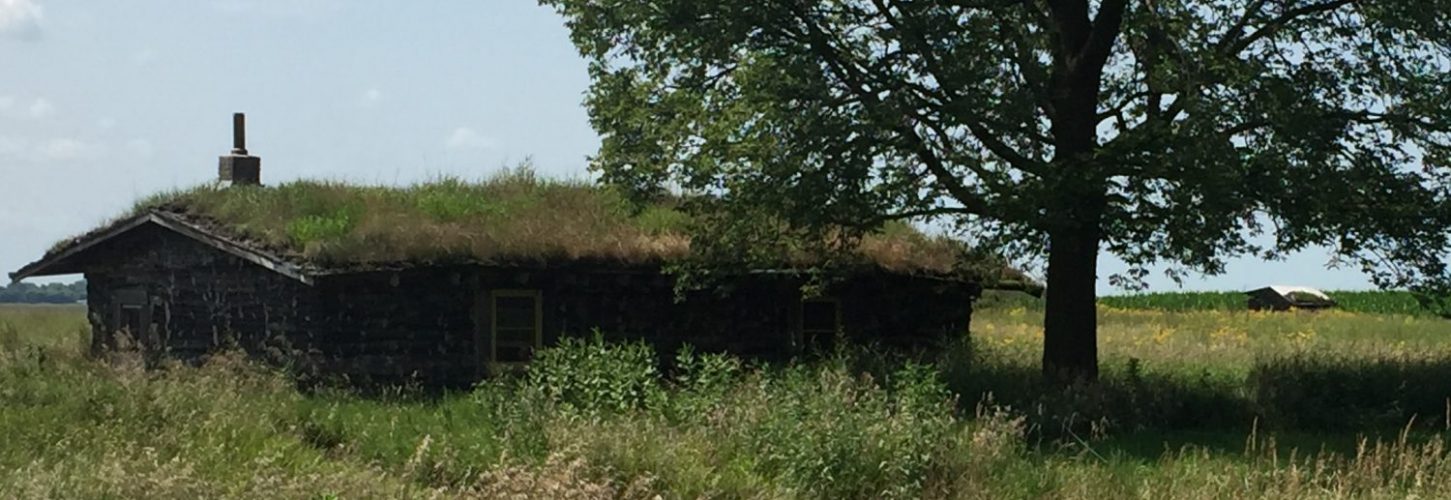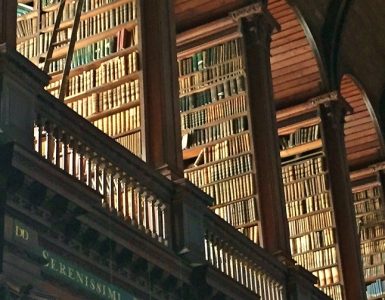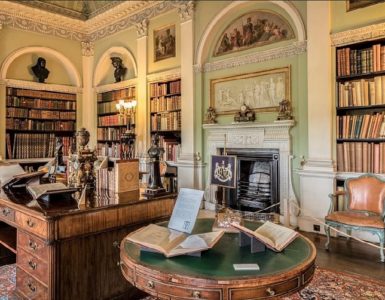Laura Ingalls Wilder, Pioneer Girl: The Annotated Autobiography, Laura Ingalls Wilder, edited by Pamela Smith Hill, Pierre: South Dakota Historical Society Press, 2014, cloth, 400 pages.
 Immediately upon hearing the words, “pioneer girl,” many growing up in the last eighty years would think about either Laura Ingalls Wilder and her stories, or The Little House on the Prairie television series. Multitudes have read the young adult novels and even more have viewed Melissa Gilbert with her TV family living on the prairie in Walnut Grove, Minnesota from 1870-1880. Wilder’s initial manuscript was an autobiography she wrote at sixty-three years of age, first, for her family, and secondly, for publication. In 1930, after encouragement from her daughter Rose, the manuscript was submitted to several publishers but rejected because the editors believed the autobiography was unmarketable, so it was archived. But now through the patient editorial work of Pamela Smith, Pioneer Girl is available for readers to understand the life behind the stories.
Immediately upon hearing the words, “pioneer girl,” many growing up in the last eighty years would think about either Laura Ingalls Wilder and her stories, or The Little House on the Prairie television series. Multitudes have read the young adult novels and even more have viewed Melissa Gilbert with her TV family living on the prairie in Walnut Grove, Minnesota from 1870-1880. Wilder’s initial manuscript was an autobiography she wrote at sixty-three years of age, first, for her family, and secondly, for publication. In 1930, after encouragement from her daughter Rose, the manuscript was submitted to several publishers but rejected because the editors believed the autobiography was unmarketable, so it was archived. But now through the patient editorial work of Pamela Smith, Pioneer Girl is available for readers to understand the life behind the stories.
The beautiful full color dustjacket is faithful to the attractive covers of Laura Ingalls Wilder’s series of “Little House” books and it wraps a quality cloth bound volume. Enhancing Wilder’s autobiography are extensive notes in parallel columns that describe historical events, identify individuals, and correlate the autobiography with Wilder’s fiction. The notes are helpful for the reader to understand the era and the hardships of prairie life. Following the lengthy introduction is a section describing changes to the former editions of the manuscript that had been put aside until the current project was transcribed. In the last section before the narrative begins, editorial procedures are given so the reader can understand abbreviations, annotations, maps, and sources. The manuscript is broken into nine sections corresponding with the states or territories in which the Wilders lived and a map is included at the beginning of each section showing the locations pertinent to events recounted in the pages that follow. There are numerous pictures of people, places, and even fashion mentioned in the autobiography. Included at the end of the book are an extensive bibliography for further reading and an index to facilitate access to topics of interest.
Pioneer Girl is the original narrative of Laura Ingalls Wilder’s personal story from the time she was two years old until she was eighteen. Her narrative tells about the Ingalls family as it struggled to survive through the difficulties of prairie life and their frequent relocations for better opportunities. Even though the television series, Little House on the Prairie, portrayed a long and stable residence in Walnut Grove, the Ingalls actually lived briefly in Kansas, Missouri, Wisconsin, Minnesota, Iowa, and the Dakota Territory. Laura described her family in loving terms as they all worked hard together. The Bible was read and prayers were said in their home, and they faithfully attended the Congregational Church in town, or they listened to the minister in other facilities if a church building was not in the area. There are many interesting stories in Pioneer Girl, but three in particular impressed this reviewer.
When the Ingalls were living in Minnesota, they had wonderful neighbors, the Nelsons. Laura and Mrs. Nelson were very close and it was this friend who taught Laura how to milk cows. The wheat in the fields had grown tall and Pa, Charles Ingalls, believed that the crop would be wonderful that year, but he was mistaken. One day Mrs. Nelson rushed into the Ingalls’ house and announced, “The grasshoppers are coming! The grasshoppers are coming!” Laura describes in great detail the swarm of grasshoppers headed for their farm. The grasshoppers ate everything green, including Pa’s wheat crop. Pa tried setting some of the field on fire to deter the insects, but it didn’t work. After three days, the grasshoppers left, but they laid their eggs before leaving. The “grasshoppers” were actually locusts. In the notes for this section, Hill discusses the visit of the Rocky Mountain locusts to that area from 1873 to 1874. Many difficulties challenged the family, but they made it through the winter despite the decimation of the locust plague. However, with the warm summer sun the next year, the locust eggs hatched. Once again the locusts ate the grain, grass, and leaves. Laura describes smashing the large insects as she and her siblings walked from place to place, “They got up under our skirts when we walked to school and Sunday-school; they dropped down our necks and spit ‘tobacco juice’ on us making brown, ugly spots on our clothes.” The crops were destroyed again and Pa said that “he’d had enough.” The family soon packed up and moved to Iowa. Many other families had to leave as well. One family was going west to Oregon because the father was a beekeeper and the locusts had eaten all of the pollen bearing flowers needed for bees to produce honey.
The account of the hard winter of 1880-1881 in the Dakota Territory occupies an entire chapter of Pioneer Girl. Laura describes in detail the hardships of that winter. From the cows with their frozen eyelashes, which caused them to be unable to see, to hours being inside with nothing to do, the stories are engaging. The Wilders did not have coal or kerosene for fuel, so they used “rag lights” lit by axle grease that Pa had for greasing his wagon. They also made fuel for fire by tightly twisting hay into knots. Laura recounts this procedure in detail. The knots made fuel that produced a hot fire but was short lived. Laura tells about the perils of trying to walk or travel anywhere with all of the snow. The train normally ran through their town, but it was halted on the tracks by piles of snow that were so large its plow could not cut through. Because the trains could not get through, there were no supplies coming to town; the Ingalls’ Christmas turkey could not be delivered until spring. Trying to go anywhere in a blizzard could be fatal. Laura described how she and Carrie were at school when a blizzard began and the teacher dismissed class. The teacher and a man named Holms walked the children from the school across the prairie to the town. They were blinded by the snow and could not see any of the buildings. They almost walked all the way through town without knowing it, but they bumped into the last building. If they had kept walking, they would have been lost on the prairie in the blizzard. After the difficult and snowy winter, spring arrived and the prairie “turned a beautiful green.”
In Laura’s teen years, prior to her marriage to Almanzo Wilder, she was very interested in the latest from the world of fashion. She described in great detail a dress that she had purchased. The editor has provided extensive notes for readers who know nothing about sewing to describe how clothes were made in the era. Sunday was the day to wear one’s best dress not only for worship, but also for afternoon buggy rides in the country. Laura and Almanzo took many excursions in his buggy with Laura exquisitely dressed. Wilder included period fashion details not only in the autobiography but also in her novels in order to provide readers with explanations of the modest attire of the day.
Laura Ingalls Wilder’s plan to publish her autobiography as history was thwarted by editors, but she was encouraged to rewrite the material in a series of novels. Perhaps because of her love for children and her family, she worked to fictionalize her life experiences so that young people living during the Great Depression in the 1930’s could realize how families might work together through difficult times. The Ingalls’ several moves as Charles sought work for steady income might have spoken to the children of the day as many saw their fathers leave home to work in the Roosevelt administration’s Civilian Conservation Corps and other economic recovery programs. As a teacher, mother, and a pioneer, Laura would have wanted to encourage and comfort the children of her day. Laura Ingalls Wilder was an accomplished author who presented her stories with additional details to add color, life, and understanding of the era. Thanks to the editors’ of her day redirecting Laura’s literary efforts to fiction rather than history, American children’s literature has a treasured series of novels; thanks to Pamela Smith Hill’s editorial work providing Pioneer Girl, Laura’s initial desire to publish her autobiography has been fulfilled. Pioneer Girl, The Annotated Autobiography, encourages the reader to once again investigate life as it was lived amidst hardships, but most of all in the middle of a beautiful prairie, filled with wildflowers.
Sandy Waugh
The header shows a sod house on the South Dakota prairie in summer. The copy of the book used for this review was purchased by the reviewer.





